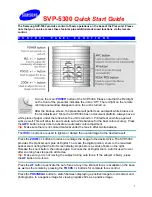
3.2
Acquisition modes
3.2.1
Free-Run
Also known as continuous acquisition. In this mode the sensor delivers a constant stream of image data at the maximum speed available
by the current bandwidth, without any external trigger. Each image exposure is sequentially started automatically when possible.
For all sensors the exposure of the next frame overlaps with the data readout of the previous frame.
This Overlapped mode gives the highest number of frames per second (
).
Figure 53: acquisition mode - free run
The frame rate in free run mode depends inversely on the frame time. In general the frame time roughly equals to the readout time or to
the exposure time, depending on which one of the two is larger. This means that when exposure time is larger than the readout time, the
frame rate gradually decreases with increasing exposure time (frame_rate
∼
1/t_exp).
3.2.2
Trigger controlled acquisition/exposure
Unlike in the free-run, each image exposure can also be triggered with an input trigger signal. In this mode, the sensor waits in stage until
the trigger signal arrives. Only then, the exposure of first frame is started, which is followed by the data readout.
Software trigger
The trigger signal can be sent to the sensor using a software command. In this case, common system related latencies and jitter apply.
Hardware trigger
A hardware trigger can be sent to the sensor using the digital input described in
Optically isolated digital input
Triggering by hardware is
usually used to reduce latencies and jitter in applications that require the most accurate timing.
XIMEA Technical Manual, Version: v230927
55















































